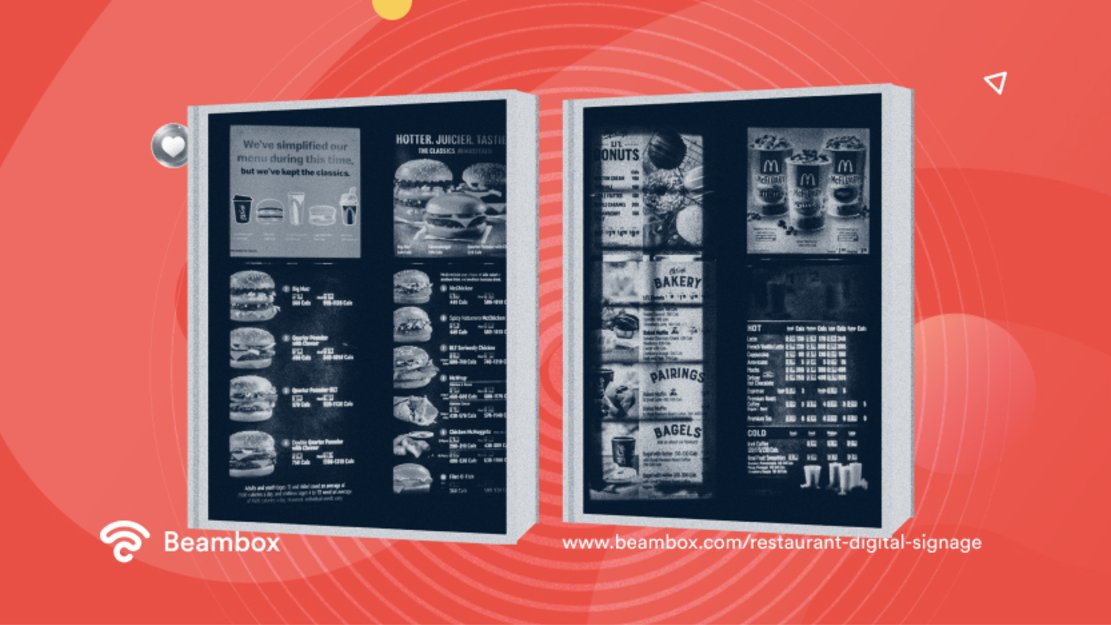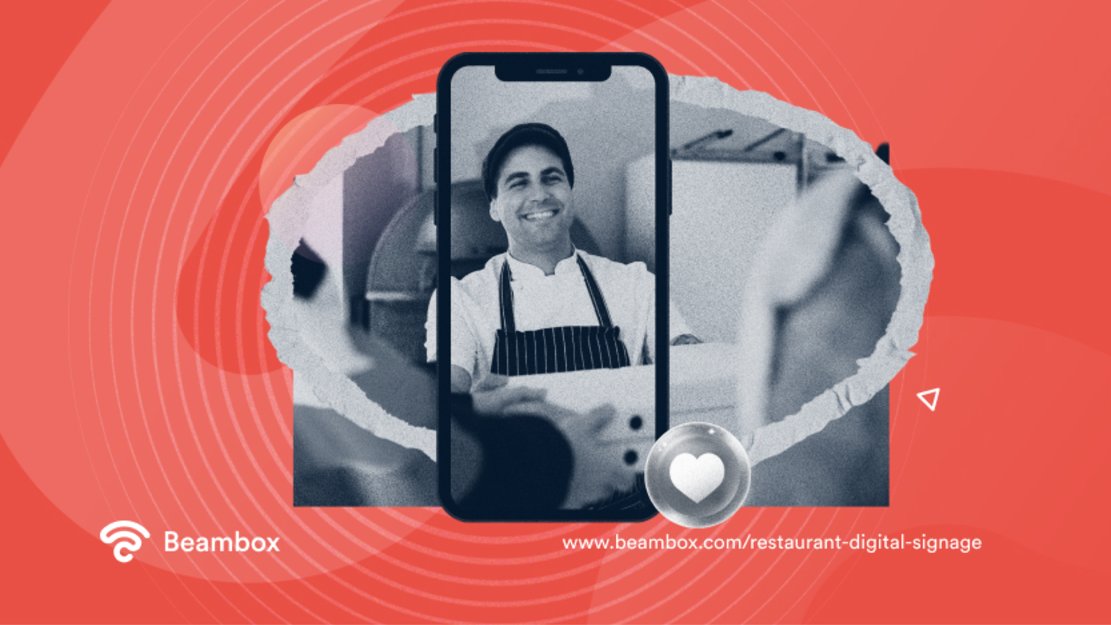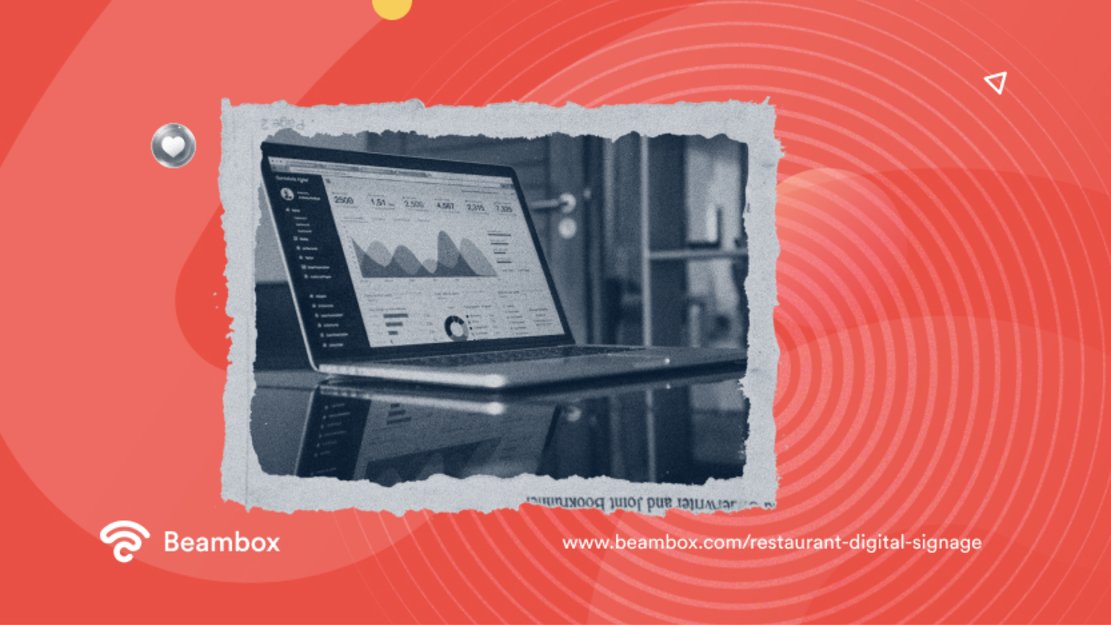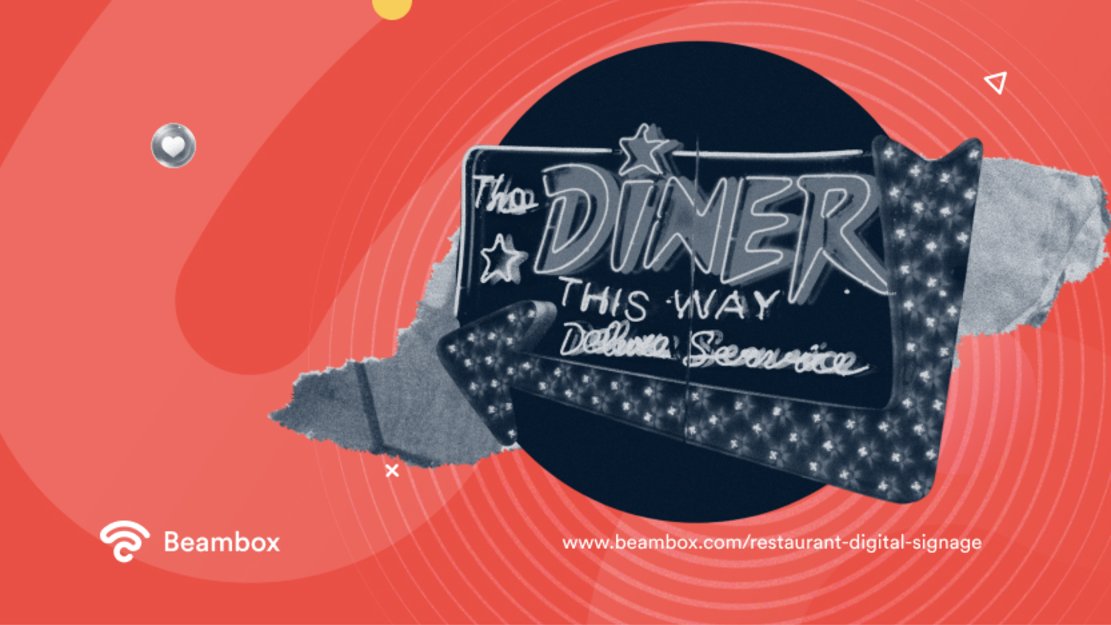In today’s technological age, restaurants constantly seek innovative ways to attract and engage customers. Restaurant digital signage has emerged as a powerful tool in the industry, revolutionizing how establishments communicate with patrons. According to a survey conducted by Yodeck, 86% of restaurants have witnessed an increase in sales by implementing digital menu boards.
Restaurant signage has emerged as a dynamic and efficient method for improving the dining experience. Digital menu boards provide a modern and visually appealing way to showcase menu items. They also allow for easy updates and customization.
This change is a win-win for both restaurants and customers. Therefore, many restaurants are modernizing their businesses to reap the benefits of digital signage. This update is expensive, but by calculating the cost-benefit analysis, in the long run, it can be a worthwhile investment. It saves money, increases revenue, and improves customer satisfaction.
This article will explain:
- What is restaurant digital signage?
- The purpose and benefits of using it
- There are some creative ways it can enhance the dining experience for both customers and restaurant owners

What Is Restaurant Digital Signage?
Displays, like LCD or LED screens, used in restaurants to present dynamic and engaging content are on the rise. These restaurant signage displays are strategically placed all over the restaurant. A few common installation areas are:
- at the entrances
- in waiting areas
- even at individual tables
The displayed content includes menus, special offers, promotions, upcoming events, social media feeds, and even entertainment. There are numerous signage providers to get you up and running. Their user-friendly design studios make it easy for even a person with no design experience to create signage. Thanks to a library of pre-built templates, there is no need to begin developing from scratch.
What Is the Purpose of Signage in Restaurants?
Businesses must adapt to technological changes and restaurant marketing strategies to remain ahead of the competition. The same holds true for dining establishments. However, how they rely on digital signs differs slightly from other business types.
The purpose of signage in restaurants is to display the menu, promote products or services, and enhance the dining experience. 54% of customers prefer going through a digital menu because the interactive experience helps them remember it.
Apart from displaying the menu, restaurant signage can prove valuable in providing important information such as
Signage content in eateries has the potential to improve the establishment’s visibility, appease upset diners, and promote repeat business.
7 Purposes of Restaurant Digital Signage
With restaurant digital signage, you can showcase the menu, daily specials, and promotions. Luckily, there has been a shift in how restaurants make use of these signs over time. Here are nine possibilities for how digital signage can serve restaurants:
Allergic reactions are common among the general public. So, for health safety and regulations, restaurants can also display nutritional information and allergen warnings. This can help customers make informed decisions about what they order and avoid potential health risks.
Signage content enables restaurants to highlight daily specials, seasonal promotions, or limited-time offers. They can showcase eye-catching visuals, videos, or animations to grab customers’ attention and entice them to try new dishes or deals.
Restaurants can leverage display content to show advertisements or cross-promote products and services. For example, they can showcase upcoming events, develop partnerships with local businesses, or advertise their catering services. This provides additional revenue opportunities for the restaurant and generates awareness among customers.
Many restaurants integrate their social media feeds into their display content. This allows them to showcase user-generated content, such as customer reviews, photos, and social media posts related to the restaurant. It encourages customers to try different dishes and participate in online engagement.

4. Use Restaurant Digital Signage to Simplify Restaurant Flow
Digital signage can streamline the ordering and waiting processes in a restaurant. It can show self-ordering system instructions, estimate wait times, or direct customers through the line. This mitigates staff workload, increases efficiency, and the overall customer experience improves as a result.
5. Use Restaurant Digital Signage to Provide Entertainment and Improve Ambiance
Computerized signage content can create a lively and entertaining restaurant atmosphere. It can entertain customers who are waiting for their orders or their table. Signage in restaurants can play videos, broadcast live sports, or provide the latest news.
Moreover, animations and illustrations can enhance the restaurant’s distinctive branding and atmosphere by enhancing the overall ambiance.
6. Convenience and Real-Time Updates Using Digital Signage Menu Boards
Displays allow quick and seamless updates. Restaurant owners or managers can remotely control and manage the content displayed on the screens. They can instantly update menus, promotions, or other information across multiple locations, saving time and resources.
One of the most common uses is digital signage menu boards. Eateries use it to display their menu rather than the customary static menu sheets. These boards offer real-time updates, making it possible to quickly alter menu items, promotions, or prices.
Digital signage menu boards are visually engaging and appealing. It can incorporate images, videos, and animations to showcase food and drink options.
7. Communicate with Employees using Digital Signage for Restaurants
Restaurant digital signage can be a communication tool for staff members. Usually mounted in the staff area, these signs display internal announcements, shift schedules, training materials, or motivational messages. This helps to keep employees informed and motivated.

5 Benefits of Digital Signage in Restaurants
The benefits of digital signage in restaurants are numerous. It provides visually appealing content, increases customer engagement, streamlines the ordering process, and offers easy updates to menus and promotions. Furthermore, it helps restaurants improve branding consistency, gather customer feedback, and leverage social media to build a sense of community.
Here are the five most common benefits a restaurant experiences as it shifts to computerized signage:
-
Enhanced Customer Experience. The content creates a visually captivating and immersive customer experience. Engaging content, such as high-resolution images and videos, draws attention and makes dining more enjoyable. This leads to an increase in customer satisfaction and retention rates and brings in new customers.
-
Revenue and Sales Growth. The eye-catching images and persuasive content can influence customers’ purchasing decisions. Upselling ideas, specials, and promotions can significantly increase revenue and sales. They serve as an attraction, enticing customers to try new dishes.
-
Time and Cost Efficiency. Traditional static signs require manual printing and replacement, incurring ongoing costs. Restaurant signage eliminates these expenses by allowing real-time updates and remote management. This saves time and reduces overall operational costs.
-
Flexibility and Adaptability. Computerized displays provide flexibility in terms of content customization. Restaurants can easily modify menus, promotions, and offers to align with changing customer preferences or seasonal demands. This ensures the content remains fresh and relevant.
-
Communication and Branding Enhancements. Computerized signage permits restaurants to exhibit their branding reliably across different touchpoints. It establishes a consistent customer experience and reinforces the brand’s identity by incorporating the restaurant’s logo and design elements.

Optimizing the Use of Restaurant Digital Signage For a Better Dining Experience
There are numerous ways to use restaurant digital signage to enhance the dining experience and engage customers. Here are some innovative ideas to help you get started:
Utilize computerized signage to keep clients informed about their waiting times or the status of their orders. Showing ongoing updates diminishes tension and enhances transparency, further improving the overall customer experience.
Use QR codes to link to online menus, loyalty programs, or special offers on displays. With their smartphones, customers can scan the codes to get access to exclusive deals or more information.
If your restaurant accepts reservations, integrate a reservation system with digital signage. Display real-time availability, allowing customers to check for open tables and make reservations on the spot.
Implement self-service digital kiosks or tabletop displays that allow customers to place their orders directly. This reduces wait times, streamlines the ordering process, and empowers customers to customize their orders. According to a survey, almost 71% of customers prefer to use kiosks as a form of payment.

5 Creative Ideas for Implementing Restaurant Digital Signage
The primary purpose of the signage is to create a lively atmosphere and improve customer experience. However, this does not mean displaying the same content repeatedly. There are numerous creative ways to use digital signage for restaurants.
Here are 5 creative ideas to help you get started:
-
Digital Chef’s Specials. Using displays, highlight your chef’s daily specials or recommendations. To entice customers to try something new, include mouth-watering images and offers that are available for a limited time.
-
Staff Spotlights. Recognize and appreciate your staff members by featuring them on digital displays. Share their achievements, skills, and contributions to create a positive and personal connection with customers.
-
Holiday and Seasonal Promotions. Change the content of your signage to reflect holidays, seasonal events, or other special occasions. To create a sense of celebration and increase customer engagement, display festive images, menu items, or holiday promotions.
-
Digital Signage for Directions. In particularly large or complex establishments, signage screens can serve as a guide to direct customers through your restaurant. Customers can easily navigate the space with the assistance of animated paths, interactive maps, or directional arrows.
-
Local Area Information. These signs also provide valuable information about the local area, such as nearby attractions, points of interest, or upcoming community events. You can partner with local businesses or organizations to promote their events on your displays. This enhances the customer experience and positions your restaurant as a knowledgeable resource and community hub.
Why It Is Important To Follow Best Practices
Implementing restaurant digital signage requires careful consideration of content strategy, hardware and software selection, strategic placement, and user interactivity. By following best practices and keeping the content fresh and relevant, restaurants can maximize the impact of their content. While there may be initial costs involved, the long-term benefits of restaurant digital signage far outweigh the investment. Increased customer satisfaction, higher sales, and operational efficiency make it a worthwhile addition to any dining establishment.
Beambox can help create memorable experiences, encourage customer engagement, boost sales, and establish a brand presence in a competitive industry. If you want to improve your restaurant’s ranking, start your Beambox free trial and grow your business.
Get Started With Free WiFi Marketing
Beambox helps businesses like yours grow with data capture, marketing automation and reputation management.
Sign up for 30 days free